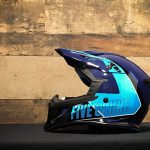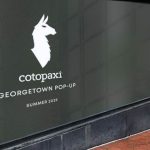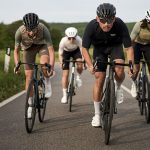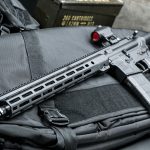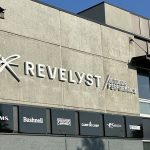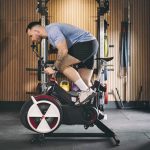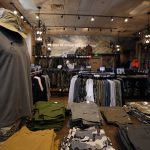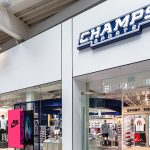The K-Swiss business for the second quarter was all about at-once fill-ins in the U.S. and the strengthening International outlook for the brand. The company continues to throw off cash and management is investing it in the best place they feel they could invest it right now their own company. KSWS has spent over $160 million to buy back 41% of the outstanding company stock since their buyback program started, helping drive EPS up again for the period.
The company reported that at-once sales accounted for 17% of revenues for the period versus negative at-once sales in the year-ago period and the companys guidance of 4% to 8% of sales. The at-once business in Q2 last year was impacted by the start-up of a new direct delivery program that moved about $10 million in sales to Q3. The full price fill-in business also had the desired impact on gross margins and the bottom line.
The Original Classic business was certainly the biggest beneficiary of the fill-in increase, as revenues for that base product jumped 59% for the period, accounting for 48% of sales. The total Classic category saw a 23% increase for the period as Limited Edition sales fell 20% for the quarter to 21% of total revenues. Chairman and CEO Steven Nichols said the LE product is doing “very nicely” at retail right now and saw the Q2 miss as due to product issues in the first half.
The increase in Classic fill-ins had a positive impact on gross margins, but had a negative effect on average selling prices, which declined 2.4% to $24.93 per pair. Higher Childrens sales also hurt ASPs. K-Swiss may reverse that trend a bit through their recent price increase in the O Classic, pushing mens to $65 msrp and womens to $60 suggested retail, effective June 1, 2005. Nichols said the price increase made sense after they found that Foot Locker, their largest customer, was selling the womens product at $60 against the suggested $55 price tag. He said they saw an opportunity for better margins for both K-Swiss and their retail customers with this increase.
Prompted by questions from analysts, Nichols addressed the comparison with Reebok Classics and the decline they saw at Foot Locker in the quarter by suggesting the major difference between the two brands was availability and distribution of product.
Total worldwide sales to Foot Locker, Inc. accounted for 14% of sales in Q2 versus 16% in the year-ago period, thanks to a 9% increase in sales to Foot Locker compared to a 19% increase in sales to all other accounts. Foot Locker represented 20% of the backlog portfolio at the end of the quarter, about the same as last year, which would indicate a 12% increase in futures at Foot Locker versus a decline of more than 33% last year.
One comparison that may not play as well is the companys positioning of Classic basketball against Nikes Air Force One.
Mr. Nichols said they cant play in the performance end of the basketball business and sign athletes to promote the shoes, but the $70 white leather basketball business where AF1 plays is “fair game” for K-Swiss.
Sales in the Training category, which includes basketball, were down 37% in Q2. Childrens was up 26% and Royal Elastics saw a 24% increase for the period.
Europe was the biggest driver to the gains on the International front, as revenues jumped 106%. Europe backlog also led the way with a 107% increase at quarter-end versus the comparable period last year, thanks to continued success in the U.K., Benelux, and Germany. They see a push into France starting in mid-2006 and are “figuring out how to get into Italy.” Sales in Asia were up 23% for the period and backlog rose 14%, due primarily to the momentum created by the companys new Japan distributor, along with “strong sales” in Hong Kong and Taiwan.
The total backlog increase at quarter-end reflects an increase in Classics and Childrens and a decline in the LE order book.
A “significantly greater” marketing spend budgeted for the back half was cited as the primary reason why Q3 EPS is projected to be in the 42 cents to 47 cents per diluted share range against diluted EPS of 57 cents in third quarter last year. KSWS also sees continued investments in marketing, sales, and product development for the Royal Elastics brand as well as the expansion of European operations affecting the bottom line for the period. Third quarter revenues are forecast in the $133 million to $138 million range, or roughly flat to last year at the mid-point of guidance.
| K-Swiss, Inc. | |||
| Second Quarter Results | |||
| (in $ millions) | 2005 | 2004 | Change |
| Total Sales | $126.5 | $107.9 | +17.2% |
| Domestic | $95.1 | $88.5 | +7.5% |
| International | $31.4 | $19.4 | +61.7% |
| Gross Margin | 46.5% | 46.1% | +40 bps |
| SG&A | 27.6% | 26.2% | +140 bps |
| Net Income | $16.8 | $13.2 | +27.1% |
| Diluted EPS | 47¢ | 35¢ | +34.3% |
| Backlog @ Qtr-End | $185.2 | $165.0 | +12.3% |
| Domestic | $137.5 | $134.9 | +1.9% |
| International | $47.7 | $30.1 | +58.5% |
| Inven. @ Qtr-End | $65.8 | $72.7 | -9.4% |


